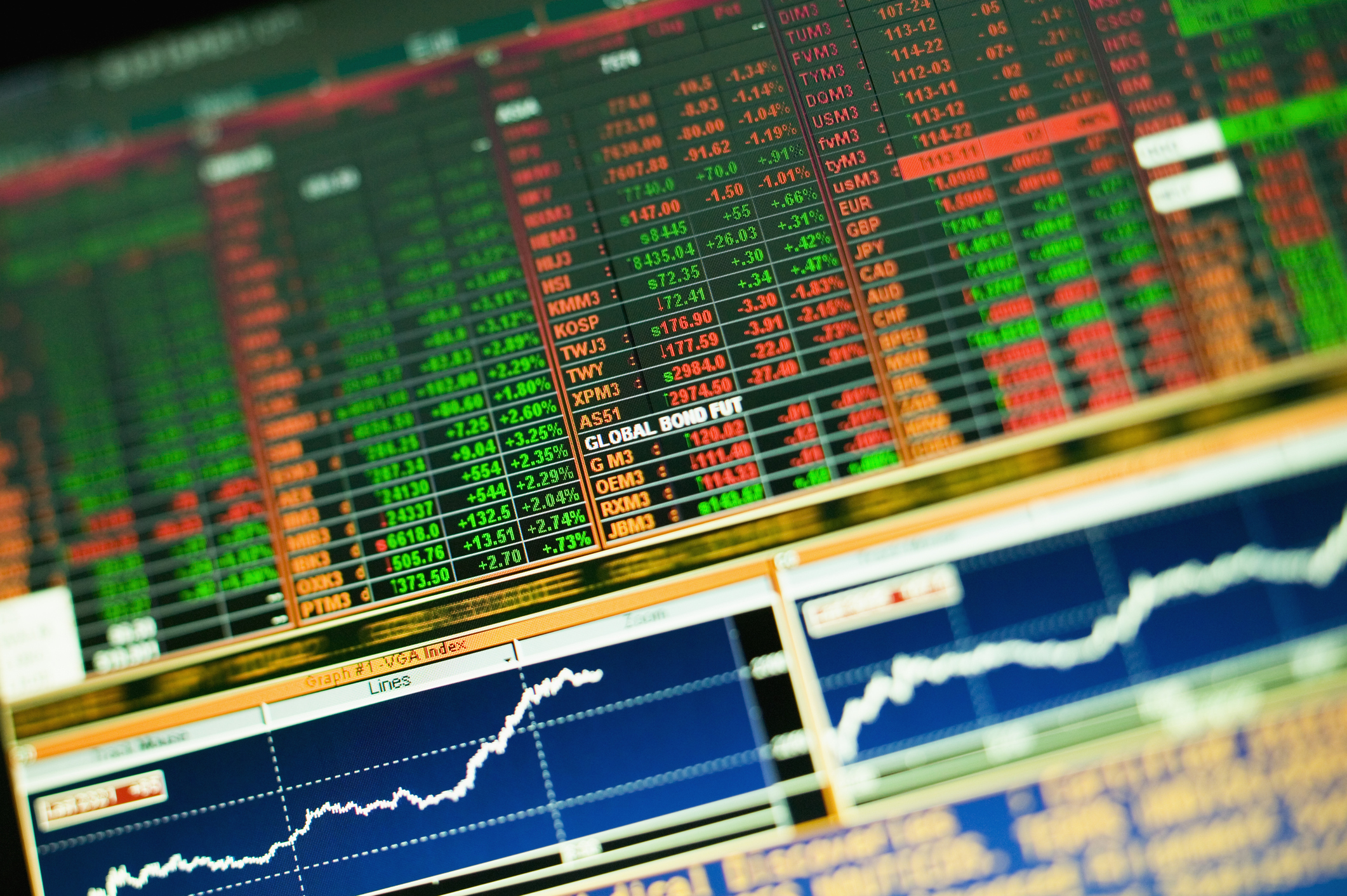The Five Best ETFs for 2014
Exchange-traded funds offer lower costs than most mutual funds, and your choices keep increasing.

Exchange-traded funds are terrific tools for investing. ETFs are generally much less expensive than ordinary actively managed mutual funds. Unlike most actively managed funds, ETFs rarely make capital-gains distributions, so they are more tax-friendly than all but the best-run index funds.
For the uninitiated, ETFs are just like regular mutual funds in that they own a bunch of securities. But they trade just like stocks — almost always at or very near their net asset value. Almost all ETFs track specific indexes, although many of these indexes are esoteric, and some were created solely to launch an ETF.
Too many ETFs are ridiculous. You can buy leveraged ETFs or ETFs that move inversely from their indexes. You can also buy ETFs that invest in incredibly narrow sectors, such as nuclear power, semiconductors or agribusiness. Steer clear of this type of nonsense.
From just $107.88 $24.99 for Kiplinger Personal Finance
Become a smarter, better informed investor. Subscribe from just $107.88 $24.99, plus get up to 4 Special Issues

Sign up for Kiplinger’s Free Newsletters
Profit and prosper with the best of expert advice on investing, taxes, retirement, personal finance and more - straight to your e-mail.
Profit and prosper with the best of expert advice - straight to your e-mail.
Which ones are worthy of your investment dollars in 2014? With the stock market fully valued and shares of most small companies overvalued, employ caution. For me, that means owning a lot of high-quality large companies. I'm not worried about keeping up with the indexes in the current bull market; I'm worried about getting killed in the next bear market — and blue chips tend to hold up relatively well in lousy markets. (For the record, I don't expect a bear market in 2014.) The one exception to my defensive posture is emerging markets, which albeit volatile and troubled are, in my view, too cheap and have too much long-term promise to pass up.
In no special order, here are my five favorite ETFs for 2014.
Schwab U.S. Dividend Equity (symbol SCHD) is similar to an old favorite, Vanguard Dividend Appreciation (VIG). Both ETFs invest only in large companies that have paid dividends in each of the past ten years and that have passed other screens designed to ensure their financial health. Schwab considers cash flow, debt and return on equity (a measure of profitability), as well as dividend growth. Vanguard looks at virtually the same measures but invests only in stocks that have raised their dividends in each of the past ten years. The Schwab ETF owns stocks such as Exxon Mobil, Microsoft and Coca-Cola. The Vanguard ETF is superb, but its asset base has swelled to more than $19 billion, making it harder for the fund to buy and sell stocks efficiently. Schwab charges 0.07% annually, compared with 0.10% for Vanguard. The Schwab ETF, which you can buy through any broker, won't keep pace in bull markets but ought to outperform the broad stock market in downturns. From the ETF's inception in late 2011, it has returned an annualized 22.4%, compared with 20.7% for the Vanguard ETF and 23.7% for Standard & Poor's 500-stock index. (All returns are through December 26.)
Market Vectors Wide Moat ETF (MOAT) is a collection of picks from Morningstar's 100-plus stock analysts. Known for its fund research, Morningstar has far more stock analysts than fund analysts, and they have quietly built a superior record. Every quarter, this ETF buys in equal amounts the 20 stocks judged by Morningstar analysts to have the strongest sustainable competitive advantages and to trade at the deepest discounts to their estimates of the companies' fair value. So, assuming the analysts are right, you'll get high-quality stocks at cheap prices. The ETF was launched only in 2012, but a virtually identical exchange-traded note, Elements Morningstar Wide Moat Focus (WMW), returned an annualized 22.5% over the past five years — an average of 3.9 percentage points per year better than the S&P 500. (I suggest avoiding ETNs because they are in effect debt instruments of the firm that issues them and so add an extra layer of risk.) MOAT's annual expenses are 0.49%.
iShares MSCI EAFE Minimum Volatility (EFAV) invests in developed foreign stock markets and holds no emerging-markets stocks. Developed markets are a little cheaper than the U.S. market, but they also face more economic headwinds. Still, if you want a well-diversified portfolio, you can't ignore overseas markets. Samuel Lee, an ETF expert at Morningstar, says that low-volatility strategies beat high-volatility strategies over the long term — and, no surprise, exhibit lower volatility. This ETF and other low-volatility ETFs tend to own stocks of big, boring companies and so lag in strong markets but hold up relatively well in poor ones. This ETF should be about one-third less volatile than the MSCI EAFE index. It holds few economically sensitive stocks — such as energy and basic materials — and owns a lot of consumer staples, health care and financial stocks. Annual expenses are 0.20%. Since its inception in late 2011, the ETF has returned an annualized 12.0% — an average of 5.0 percentage points per year less than the MSCI EAFE index.
Vanguard FTSE Emerging Markets (VWO) is my pick for emerging markets. It's a twin of Vanguard Emerging Markets Stock Index (VEIEX), one of my best stock mutual funds for 2014. Emerging-markets stocks have lost money in two of the past three years. Although they are risky, I think they are a good buy today. Many ETFs employ rules-based indexes — that is, the ETF selects stocks according to preset quantitative criteria. But the Vanguard ETF employs a traditional indexing strategy, weighting stocks according to their market value. The ETF lost 6.0% in 2013, but over the past five years it returned an annualized 14.5%. Expenses are 0.18% per year.
Vanguard Short-Term Corporate Bond ETF (VCSH) promises merely to tread water in a bond market that offers little, if any, value. It yields just 1.4%, but it should lose little if interest rates continue to rise, which is likely. Should yields rise by one percentage point, this ETF should lose 3% in price, nearly half of which would be offset by the fund's yield. Plus, there's not much credit risk. The fund's bonds boast an average credit quality of single-A. To be honest, I think bond investors will do better with one of the actively managed mutual funds mentioned in my piece on the best bond funds for 2014. In an overvalued bond market, I prefer a good manager's judgment in picking bonds. But the Vanguard ETF will keep you out of trouble. And as yields rise, the income it throws off will grow.
How did my picks for 2013 do? My domestic stock ETFs returned an average of 30.6% over the past year, compared with 32.5% for the S&P. As for my foreign stock picks: Vanguard FTSE Developed Markets ETF (VEA), which tracks stocks of developed foreign countries (and changed its name and benchmark index from Vanguard MSCI EAFE ETF in mid-year), returned 21.0% over the past year. And Vanguard FTSE Emerging Markets ETF (which changed its name and index twice in 2013) lost 4.4%. My bond ETFs lost 2.5%, on average, compared with a 2.0% loss for the Barclays Aggregate U.S. Bond index.
Steve Goldberg is an investment adviser in the Washington, D.C., area.
Profit and prosper with the best of Kiplinger's advice on investing, taxes, retirement, personal finance and much more. Delivered daily. Enter your email in the box and click Sign Me Up.

-
 Stocks Extend Losing Streak After Fed Minutes: Stock Market Today
Stocks Extend Losing Streak After Fed Minutes: Stock Market TodayThe Santa Claus Rally is officially at risk after the S&P 500's third straight loss.
-
 What Bilt Cardholders Need to Know as Wells Fargo Exits the Program
What Bilt Cardholders Need to Know as Wells Fargo Exits the ProgramA major shake-up in the Bilt Rewards program could affect your credit card, rent rewards and points strategy heading into 2026.
-
 3 Major Changes to the Charitable Deduction in 2026
3 Major Changes to the Charitable Deduction in 2026Tax Breaks About 144 million Americans might qualify for the 2026 universal charity deduction, while high earners face new IRS limits. Here's what to know.
-
 How Our Favorite ETFs Are Performing Amid Market Volatility
How Our Favorite ETFs Are Performing Amid Market VolatilityA roller-coaster year for the stock market has weighed on several of our favorite ETFs, but one equities fund is faring better than others. Here's why.
-
 5 Dividend Growth ETFs to Buy
5 Dividend Growth ETFs to BuyDividend growth ETFs can provide investors with a steadily growing stream of passive income and exposure to quality companies.
-
 The Best ETFs to Buy for 2026 and Beyond
The Best ETFs to Buy for 2026 and BeyondThese ETFs possess structural characteristics that make them perennially good buy-and-hold options for a wide variety of investors.
-
 ESG Gives Russia the Cold Shoulder, Too
ESG Gives Russia the Cold Shoulder, TooESG MSCI jumped on the Russia dogpile this week, reducing the country's ESG government rating to the lowest possible level.
-
 Best Index Funds for a Low-Priced Portfolio
Best Index Funds for a Low-Priced PortfolioETFs Index funds are popular thanks to their low fees and wide diversity of stock selections. Here are nine that stand out.
-
 Kip ETF 20: The Best Cheap ETFs You Can Buy
Kip ETF 20: The Best Cheap ETFs You Can BuyETFs Build a solid core for your portfolio and explore new opportunities with our favorite low-cost exchange-traded funds (ETFs).
-
 The 9 Best Vanguard Mutual Funds to Buy
The 9 Best Vanguard Mutual Funds to Buymutual funds The best Vanguard mutual funds might cover a wide assortment of investing strategies, but they have two things in common: simplicity and cheap fees.
-
 Morningstar Fund Ratings Adopt a Stricter Curve
Morningstar Fund Ratings Adopt a Stricter Curveinvesting Morningstar is in the middle of revamping its fund analysts' methodology. Can they beat the indices?